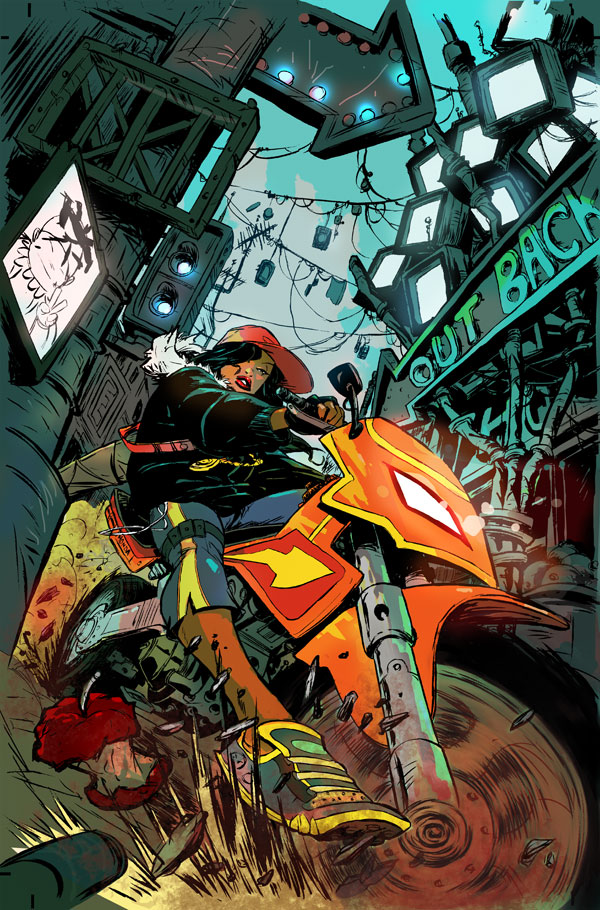Chadwick notes in his introduction to the volume one collection, compiled by Dark Horse comics starting in 2005, that Concrete is merely "Just one hapless rock-coated fellow, enduring the consequences of my asking the question: what would I do in his shoes?" (p.4). As it is for most writers of fiction, it is no surprise that Chadwick does not hide the idea that he wishes to live vicariously through his character. But what makes Concrete as a character, and an extension of Chadwick's wish fulfillment, that much more interesting is the exploration of someone that would probably be categorized as having some sort of mid-life crisis who wishes to embrace life for the remainder of their time alive. This collection is full of such examples, and it is what gives many of the stories and moments extra weight. I found one of the most interesting ideas presented by Chadwick in this collection is his construction of Concrete's journey for life reflected in our unconscious wanting of heroism.
The Need to be a Hero
In the opening story of the collection, "A Stone among Stones", we are dropped into the life and world of Concrete in medias res. This is a bold choice by Chadwick and speaks volumes about the respect the author shows for the audience in letting the reader begin to make decisions of their own based on some well placed visual clues and secondary narration (in which an incident on a late-night show is mentioned in a talk radio program and is returned to by Chadwick in the origin story entitled "A New Life"). These little subtleties draw the reader into the familiar and comfortable grounds of hero narrative via the concept that a misunderstood alien and or being wants to help mankind and is adored by all. But such simple ideas about what we believe a hero narrative to be about is quickly turned out, as Concrete, who is hiring a personal assistant, let's the interviewee know that "My needs are obvious, Larry. The huge fingers can't type, and I need help with everyday things...driving, getting tickets, and so forth. / This body is an opportunity, too though./ I mean to use it--to mount expeditions to dare great things.../...and earn my way by writing about them. I was a writer before I...came to my present condition" (p.14). The hero, the changed being, is here re-positioned to be the hero novelist/journalist, the Hemmingway or even gonzo Hunter S. Thompson, although minus the drugs and other self-abuses.
The call to perform heroics comes of course convienantley as an actual physical phone call to be a hero within the opening story, as Concrete is asked to rescue miners who have become trapped in an accident across the country in Kentucky. Concete is certain he can save all of their lives, and his confidence is high in finding two of the minors and getting them out. His heroic swagger leads Concrete to return quickly to the mine to save the others, where he proceeds to self-narrate and even dramatize the events of his attempt as he is in the process of doing it--" Hmmm...Here amid these lifeless minerals, life held on...No, I hoped life held on..."(p.23). But here is the first lesson of what type of hero Concrete is...a fallable and all too human one. He does not get to the other miners as he causes in his haste a cave in onto himself (fig. 1), in which of course dooms the miners to not being rescued in time in another part of the mine. Much like in life, things go wrong, and when they do it is that part of life one must accept, which Concrete does later in stating " Let's have some perspective here.../We did save two lives, the only two we could save. It was worth it, public relations be damned" (p.33).
 |
| (fig. 1) |
 |
| (Fig. 2) |
 |
| (Fig. 3) |
 |
| (Fig. 4) |
All excerpts and images used come from Concrete Volume One: Depths, created by Paul Chadwick and published by Dark Horse books, a division of Dark Horse Comics.




